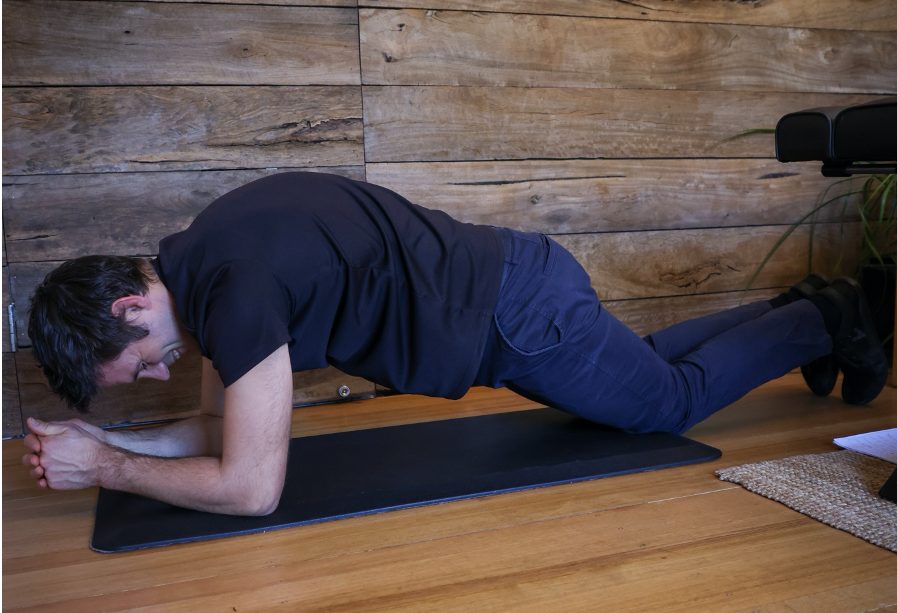A Knee Plank is an effective way to work on developing a stable core. This position is less supported than some other basic core stabilizing exercises. So, if you feel un-sure about your ability to maintain a stable position then * make the bridge slightly higher (more hunched) to be on the safe side. (A too-low bridge with an arched lower back can lead to excessive loading of the lumbar sacral junction and lumbar facet joints). The fact that the Knee plank is performed from a kneeling position reduces the distance of the bridge span and therefore decreases the loading on your core compared to a full plank position (performed with the support on the toes rather than the knees).
Execute the plank by kneeling on your knees, then position your forearms on the ground with your elbows roughly vertically under your shoulder joints.
Try to shorten the underside of the bridge by doing an “abdominal crunch” activation so that the lower ribs move down towards the pelvis and the sacrum moves away from the lower back.
To reduce the strain on your shoulder joints, protract your shoulder blades forward, by poshing your arms into the ground (away from your torso).
Start with a 30 sec hold and progressively build up the time until you can do about 90 sec with good form. After that you can progress to a full plank performed on your toes instead of on your knees.

